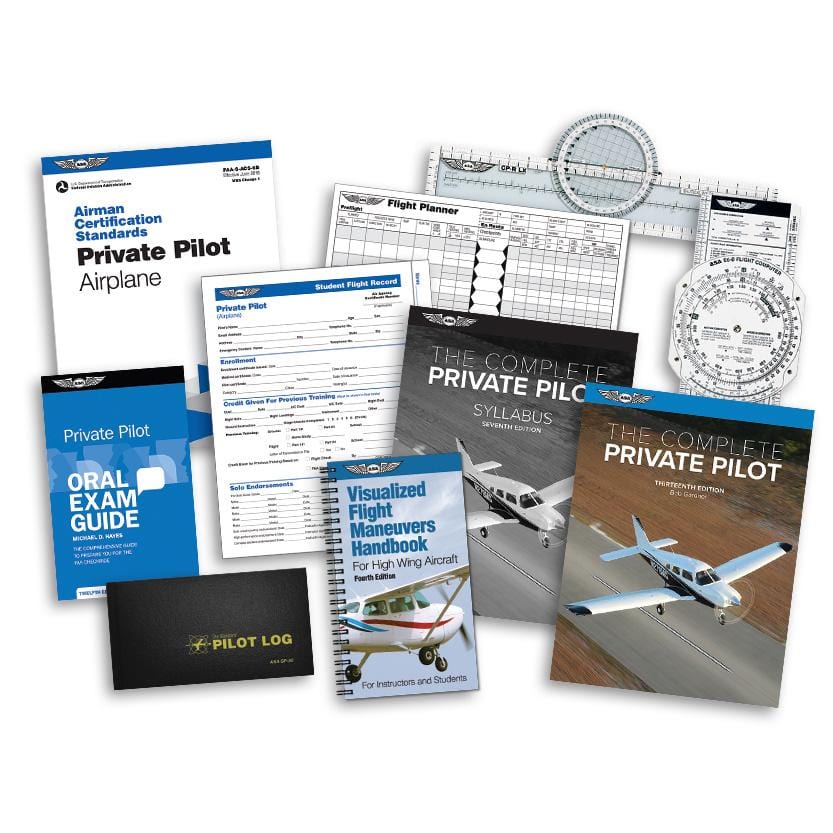What in the world is “scud running?” If you are asking this question you are not alone. It may sound like something a Tusken Raider would do in a Star Wars landspeeder, but human pilots have been known to engage in scud running their rotary and fixed wing aircraft with mixed results.
In this article we will answer this question and cover the dangers involved with scud running in order to help make you a safer pilot.
So, let's get started!

What is scud running?
Scud running refers to the practice of flying at low altitude to remain below clouds and avoid instrument meteorological conditions (IMC).
When engaging in scud running, a pilot will continue to decrease altitude as needed to stay below inclement weather and remain under visual flight rules (VFR) rather than instrument flight rules (IFR) despite marginal conditions.
The FAA aptly describes scud running as “pushing the capabilities of the pilot and the aircraft to the limits by trying to maintain visual contact with the terrain while trying to avoid physical contact with it.”
So, what is a scud? The National Weather Service defines scuds as “small, ragged, low cloud fragments that are unattached to a larger cloud base and often seen with and behind cold fronts and thunderstorm gust fronts.”
Scud running got its name from pilots running their aircraft below these scuds.

Why is scud running dangerous?
According to NTSB and FAA data, continued VFR flight into IMC is one of the leading causes of general aviation accidents. Most of these accidents are fatal.
When engaging in scud running, you are flying dangerously close to the ground, pushing your own capabilities as well as those of the aircraft.
You tread the fine line between flying close enough to the ground to maintain a visual and flying so close that you make contact.
Due to the nature of scud running, it is understandably closely linked with controlled flight into terrain (CFIT) accidents which account for 17 percent of general aviation fatalities.
Scud running is dangerous because continued VFR flight into IMC too often leads to a CFIT accident. Controlled flight into terrain is a very real possibility with scud running due to a combination of multiple factors.
- Obstructions
By flying at abnormally low altitudes, pilots can put themselves at the same altitude as obstructions like cell phone towers, radio towers, TV towers, windmills, and other manmade constructs.
While most communication towers and other similar structures are outfitted with aircraft warning lights, in the low-visibility weather conditions that precipitate scud running, the lights may not be visible or the pilot may see them too late to avoid a collision.
- Topography
In rugged, hilly, or mountainous areas, the topography of the earth can change quickly. An altitude that put you at 900 feet AGL one minute could place you at the same altitude as a mountain peak the next.
With limited visibility, you may be unable to see hazardous terrain features in your flight path.
- Visibility
The more limited the visibility, the lower the pilot will need to fly to maintain visual contact with the ground. This lower altitude exacerbates the previously mentioned hazards of manmade obstructions and irregular topography.
- Reaction time
A scud running pilot does not have the benefit of altitude to provide additional safety in case of emergency. A fast reaction time is needed to deal with the hazards posed by obstructions and topographical changes.
When coupled with the decreased visibility and low altitudes of scud running, a pilot’s reaction time may be insufficient.
These factors reinforce and exacerbate each other. For example, as visibility decreases, the dangers posed by obstructions and topographical changes increase.
The faster a pilot is flying during scud running, the less reaction time he or she has once dangerous terrain comes into view ahead. Add in decreased visibility, rapidly changing topography, and the dangers posed by obstructions, and you have a recipe for disaster.
Why do pilots do scud running?
Scud running is generally regarded as a dangerous practice, yet pilots continue to engage in it despite the risks. In some cases, pilots make a considered and calculated decision to scud run because they determine that it is warranted in their particular situation.
Other times, pilots engage in scud running because they have fallen victim to a flaw in their aeronautical decision-making process. Some of the most common ill-advised rationale for scud running include:
- Pressure to complete the flight
- Overconfidence in piloting ability
- Overconfidence in familiarity of the route
- Get-there-itis
How can you get lured into unplanned scud running?
In some cases, scud running is premeditated. Weather conditions are marginal, visibility is limited, and the ceiling is low prior to takeoff. VFR weather minimums are barely met and there is a potential for conditions to worsen.
A pilot taking off VFR in these conditions has a reasonable expectation that he or she will need to either abort the flight, switch to IFR (if qualified), or engage in scud running practices.
The more insidious version of scud running that otherwise conscientious safety-minded pilots can get lured into is a sliding scale visibility illusion that accompanies an inadvertently experienced VFR into IMC condition deterioration.
If conditions worsen slowly, a pilot’s perception of the relative visibility forward and aft may not be accurate. The forward motion of the aircraft causes objects ahead to progressively come into focus while landmarks behind the aircraft disappear into the soup.
When the pilot considers turning around, it will appear that the conditions to the aft are deteriorating and that the best option is to proceed forward towards the apparently improving conditions in front of the aircraft.
It can look like any minute you will break through the haze. Unfortunately, this is an illusion, and the faster the airspeed, the more pronounced the illusion is.
The pilot will be tempted to continue scud running into potentially unknown terrain rather than retracing their course over ground which they have already covered and are familiar with.
Alternatives to scud running
The first and arguably best alternative to scud running in many cases is to simply stay on the ground and wait out the marginal weather.
Another proactive step that pilots can take is to earn an instrument rating and become proficient at IFR flight. This offers a safer alternative to scud running when you absolutely must fly in less than ideal visual conditions.
If you are already in the air and the weather goes sideways during a VFR flight, as you consider the prospect of a dangerous scud running scenario, remember your aeronautical decision-making process.
Weigh your options and systematically select the best course of action given your circumstances.
First, if you are IFR-rated, current, and your aircraft is properly equipped, you can request pop-up IFR clearance. Pop-up clearance is used to switch from VFR flight into IFR instead without the need for a previously filed IFR flight plan.
The ability to request a pop-up clearance can bail pilots out of a sticky and worsening situation. Keep in mind that when you make the request, the controller will confirm that you are able to maintain your own terrain and obstruction clearance until you reach the minimum instrument altitude (MIA).
Another option is to consider alternative destinations and available fuel. If there is another viable destination within range and it allows you to avoid the IMC weather, diverting may be the safest choice.
You may also be able to make a safe 180-degree turn and retrace your flight path back to your departure airport to wait out the weather.
Finally, you may be flying over a remote area with no alternate airports. Turning around is not be an option. You are not be IFR rated or you are flying a non-IFR-capable aircraft. In this case, it may be time to consider emergency landing zones.
(Check out this video by TheDoctorMedic on the dangers of Scud Running)
Scud running accidents and learning lessons
Unfortunately, there are plenty of scud running accidents and near misses to learn from. Consider these case studies and notice the pilots’ decision-making process. Where did they go wrong, and what can you do so that this does not happen to you?
- A new VFR-rated pilot who survived a near miss with the San Bernardino Mountains
- Another VFR-only pilot who collided with a radio tower in Nebraska
- An IFR-rated pilot who continued VFR into a ridge in the Santa Ana Mountains
- An experienced retired ATP pilot who waited until too late to request IFR clearance and flew into an isolated peak near Banning Pass
- A CFI who continued VFR flight into deteriorating conditions and collided with a mountain near Joshua Tree
Is it ever okay to scud run?
As we have said, you do not have to look far – just ask other pilots or conduct a quick internet search, and you will be inundated with many warnings and horror stories about the dangers of scud running. Still, you may be wondering if it is ever okay to scud run.
Pilots who have felt the need to scud run cite navigation equipment failures, strong headwinds at IFR altitudes, ice or turbulence, and a lack of alternative options when IMC conditions develop while flying over remote locations.
As AOPA writer and helicopter pilot Maria Langer puts it, “Scud running is never a good idea, but sometimes it’s the best idea under unforeseen circumstances.”
The bottom line is that your safety and the safety of any passengers you have onboard is your responsibility as pilot in command. You should always be making the safest decision possible. Only you can be the judge of that.

|
ASA Aviation WeatherAll pilots deal with weather. They must learn to appreciate good weather; to recognize and respect marginal or hazardous weather; and to avoid violent weather. Recognizing these weather patterns and making the appropriate decisions are critical to the successful outcome of all flights. This book discusses each aspect of weather as it relates to aircraft operation and flight safety. |
Learn More About Real Events
Learning about the mistakes of the past can help us to avoid repeating them int he future. Check out our article: 8 Preventable Airplane Disasters (Avoid Making These Fatal Mistakes)
Did you find this article helpful?
Do you think we missed anything important? Let us know in the comments below!











